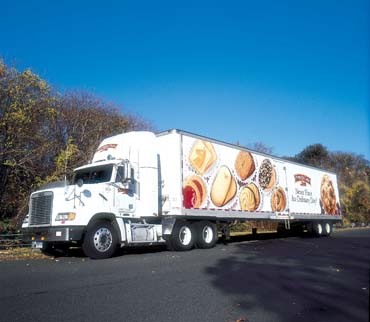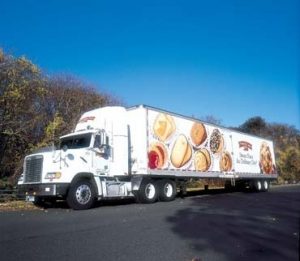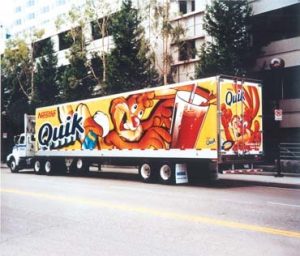Whether you're a graphics-industry novice or veteran, you've probably heard such vinyl-related terms as cast, calendered, 2-mil, 4-mil, high-performance, intermediate and economy. However, most may not know these films' ingredients or manufacturing processes. This column will address several attributes of cast and calendered materials, as well as how each is made, and how this process impacts the material's characteristics.
How they're made
Most vinyl films comprise the same basic raw materials. Polyvinyl chloride (PVC) polymer, which is simply standard, rigid plastic, serves as the primary ingredient. Other ingredients added to PVC include plasticizers, which make the film flexible; pigment to provide the desired color; and such additives as absorbers to improve UV resistance, heat stabilizers, fillers and processing aids. The quality of these raw materials may vary widely.
In addition to the raw materials, the manufacturing process and plasticizers dictate film quality. The grade of plasticizer, which makes film flexible, impacts film quality. Pressure-sensitive-adhesive film fabricators choose polymeric (complex, interlocking molecular layers) or monomeric plasticizers (single-chain molecules). Generally, consider polymeric plasticizers higher quality because they offer greater flexibility than monomeric.
The term "cast" refers to the manufacturing process. PVC and other primary ingredients are mixed in a predetermined order at specific speeds for a set amount of time to ensure consistency. This liquid mixture, known as organosol, is then poured onto a moving web, which is called the casting sheet, and then processed through ovens that evaporate the solvents. When the solvents evaporate, the solid vinyl film is molded on the casting sheet in a relaxed state and coated with clear acrylic.
Advertisement
This process allows the film to be very thin (most cast films are 2 mil) and dimensionally stable, which helps with product conformability. Material manufacturers recommend the use of cast films on such substrates as fleets, recreational vehicles or boats where the customer wants a "paint-like" finish that will endure, usually five to eight years depending on how the film is processed.
Like cast, calendered films are named for their manufacturing process. They're similarly formulated, but they don't incorporate solvents. Manufacturers mix and heat batches to a semi-molten state that resembles pizza dough. Then, they extrude the film and feed it through a series of calendering rolls. These polished steel rolls progressively squeeze and stretch the vinyl into a flat sheet (similarly to flattening out dough with a rolling pin).
Film properties
Cast films, which are durable and very conformable, incur less shrinkage because the "casting sheet," not the film itself, is pulled through the machine. Because no stress was applied to the film during the manufacturing process, the film doesn't revert to its original form.
Cast films can be made very thin, which allows application over substrates with rivets, corrugations and complex curves. Also, once applied, this low caliper makes the graphic less vulnerable to abrasive forces.
Advertisement
Cast films also maintain their color and other properties quite well. This results in better UV absorption and stronger pigments. Also, the cast-film process allows smaller production runs, and it's relatively easy to change film colors during production.
The extremely fast calendering process ideally suits bulk production runs, which typically yield high returns. Thus, calendered films are relatively inexpensive. Also, their relative stiffness translates to easier handling and better abrasion resistance.
Because calendered film is stretched into shape, it has some degree of memory. Therefore, when calendered films are exposed to heat, they tend to shrink or pull back towards their original form. Unlike casting, where a textured or smooth casting sheet is processed for the film's finish, calendering implements a cylinder that creates the finish at the end of the process, while the film is still warm.
In the past, all calendered films were considerably thicker (usually 3.2 to 3.4 mils) than cast films because of the high rigidity of the calendering process. Today, however, improvements in the calendered-film manufacturing process allow thinner materials that are somewhat less rigid — some calendered materials on the market today comprise polymeric material, are 2.4 mils thick and approximate the performance of intermediate, cast films. However, calendered films offer somewhat fewer colors. For instance, one manufacturer's intermediate-grade, calendered-film palette comprises 62 colors, while its high-performance, cast-film color repertoire tallies 103.
As with anything else, the finished product is only as good as what you put into it. This begins with choosing the right vinyl for the job. Ultimately, I suggest cast films for graphics that require conformability and a paint-like finish, such as vehicle graphics. Contrastingly, calendered films are ideal for applications that don't require extensive stretching or contours, such as floor graphics, wall murals and POP displays.
Advertisement


 Tip Sheet1 week ago
Tip Sheet1 week ago
 Photo Gallery3 days ago
Photo Gallery3 days ago
 Ask Signs of the Times5 days ago
Ask Signs of the Times5 days ago
 Real Deal2 weeks ago
Real Deal2 weeks ago
 Benchmarks1 week ago
Benchmarks1 week ago
 Photo Gallery5 hours ago
Photo Gallery5 hours ago
 Women in Signs2 weeks ago
Women in Signs2 weeks ago
 Women in Signs1 week ago
Women in Signs1 week ago
















